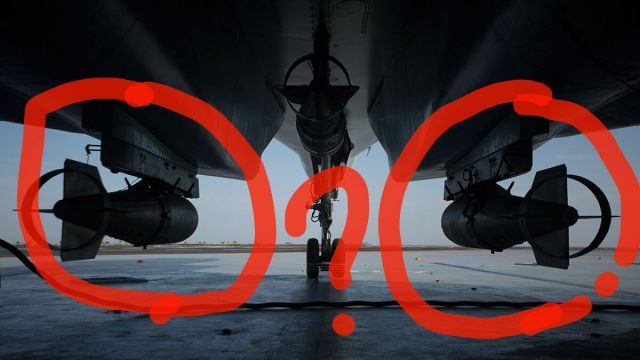-
![[image]](https://www.balancer.ru/cache/sites/ru/se/severpost/docs/upload/128x128-crop/1389894211.jpg)
Авиакрыло «Кузнецова»
Споры о составе и вместимостиТеги:
gals> Гм, откуда уверенность, что после 13? -в репортаже полно кадров с предыдущих этапов похода - когда эскадру еще норвеги инспектировали и бриты.
Я сказал думаю , главное мы увидели это.Тут другие темы нарисовываються:
-продолжаеться информация о потерянном су-33 ,МО опять молчит,не делая опровержения,значит?
-будут ли это богатство применять?
Я сказал думаю , главное мы увидели это.Тут другие темы нарисовываються:
-продолжаеться информация о потерянном су-33 ,МО опять молчит,не делая опровержения,значит?
-будут ли это богатство применять?


- Balancer [05.12.2016 13:20]: Перенос сообщений в СМИ сообщили о потере второго истребителя с «Адмирала Кузнецова»

СМИ сообщили о потере второго истребителя с «Адмирала Кузнецова»
Есть неподтвержденные сведения, что и Су-33 потеряли, сегодня... Хорошо бы, это "уткой" оказалось// Авиационные новости.



Минобороны рассказало о потере второго истребителя с «Адмирала Кузнецова»
Второй истребитель с крейсера «Адмирал Кузнецов» потерпел крушение в Сирии. По данным Минобороны, Су-33 выкатился за пределы палубы и упал в воду. В середине ноября при выполнении полетов упал в воду истребитель МиГ-29 // www.rbc.ruну что я тут могу сказать, судя по всему разучились, отсутствие практики... хорошо, что летчик снова жив, но черт! очередную машину потеряли. тем более СУ-33, которые на конвейере не стоят.


Balancer:
Сообщением выше ссылка на выделенную тему.; предупреждение (+1) по категории «Нарушение форматирования страниц, связности цепочки ответов, некорректный выбор темы или иные действия, затрудняющие чтение.[п.13]»
- Balancer [05.12.2016 14:33]: Предупреждение пользователю: Retvizan#05.12.16 13:35
- Balancer [05.12.2016 14:35]: Перенос сообщений в СМИ сообщили о потере второго истребителя с «Адмирала Кузнецова»
- VAS63 [05.12.2016 15:16]: Перенос сообщений в ...del
Slava2014> Да он всё равно (не с этого двора) просто так погулять вышел, вон и воспиталки из "Вертолётов России" под крылышки держат - маленький ещё.
Вот еще видео с несколькими новыми бортами
Syria: 'Hero of Russia' Matkovski talks military life aboard the Admiral Kuznetsov
Head of Aviation aircraft carrier group of the Northern Fleet, holder of the Order of Courage and Hero of Russia, Igor Matkovski spoke on his military career on Heroes of the Fatherland Day, on the deck of the heavy aircraft-carrying cruiser Admiral Kuznetsov, located in Mediterranean Sea, Friday. The carrier was the launch site of Sukhoi Su-33 jets that were carrying out missions in Syria.
Су-33 б.н. 85 и 77
Миг-29К б.н. 41
Миг-29КУБ -б.н. 52
Вот еще видео с несколькими новыми бортами
Syria: 'Hero of Russia' Matkovski talks military life aboard the Admiral Kuznetsov
Head of Aviation aircraft carrier group of the Northern Fleet, holder of the Order of Courage and Hero of Russia, Igor Matkovski spoke on his military career on Heroes of the Fatherland Day, on the deck of the heavy aircraft-carrying cruiser Admiral Kuznetsov, located in Mediterranean Sea, Friday. The carrier was the launch site of Sukhoi Su-33 jets that were carrying out missions in Syria.
Су-33 б.н. 85 и 77
Миг-29К б.н. 41
Миг-29КУБ -б.н. 52


brazil> Вот еще видео с несколькими новыми бортами
Да этим киношникам верить - на 31-й сек. на взлёт выруливает Су-33 "71 красный", а на 32-ой сек. на третью стартовую разворачивается уже "78 красный" ...
...
Я подновил своё досье по крылу ...
Да этим киношникам верить - на 31-й сек. на взлёт выруливает Су-33 "71 красный", а на 32-ой сек. на третью стартовую разворачивается уже "78 красный"
 ...
...Я подновил своё досье по крылу ...
Прикреплённые файлы:


В свете последних событий (потеря двух истребителей) - у нас чуть что "человеческий фактор". Вот посмотрите (из этого же ролика), "человеческий фактор" - садится МиГ-29КУБ "52-ой синий", на второй трос, чётко, как влитой! Молодцы мужики! Пересмотрел раз пять - получал удовольствие ...
Прикреплённые файлы:


Slava2014>- садится МиГ-29КУБ "52-ой синий", на второй трос, чётко, как влитой! Молодцы мужики! Пересмотрел раз пять - получал удовольствие ...
вообще-то обтимальный - третий.
вообще-то обтимальный - третий.


Slava2014>>- садится МиГ-29КУБ "52-ой синий", на второй трос, чётко, как влитой! Молодцы мужики! Пересмотрел раз пять - получал удовольствие ...
Bredonosec> вообще-то обтимальный - третий.
Голос (эхо):"Бес противоречия терзает твою душу, сын мой! Взгляни на фото - это ТАВКР "Тбилиси" на ходовых в 1990 году - и посчитай на каком тросе круг нарисован ..."
Bredonosec> вообще-то обтимальный - третий.
Голос (эхо):"Бес противоречия терзает твою душу, сын мой! Взгляни на фото - это ТАВКР "Тбилиси" на ходовых в 1990 году - и посчитай на каком тросе круг нарисован ..."

Прикреплённые файлы:


- Balancer [10.12.2016 17:28]: Перенос сообщений в Су-33 . Новости.
Опачки, интересный ракурс 
4-ка мигов
они же, но уже в "золоте"
Все, поменял на рабочем столе Эссена на вот такого Кузнецова
vk.com/milinfolive

4-ка мигов
они же, но уже в "золоте"

Все, поменял на рабочем столе Эссена на вот такого Кузнецова

vk.com/milinfolive


В продолжении альбома vk.com/milinfolive:
Звездная ночь
Миги на "подъеме"
Пятьдесят второй
И такой пятьдесят второй
Звездная ночь
Миги на "подъеме"
Пятьдесят второй
И такой пятьдесят второй


- Balancer [11.12.2016 04:58]: Перенос сообщений в Су-33 упал в море при посадке на «Адмирала Кузнецова»
Dark> Опа! ОБС, что Миг-29К БН 39 и 48, уже на базе в Хмеймим! Вскоре будут полеты с Кузнецова! Осталось немного подождать.
Я правильно понял, это новые МиГи которые не были изначально на крейсере, а прилетели своим ходом из России?
Я правильно понял, это новые МиГи которые не были изначально на крейсере, а прилетели своим ходом из России?


Dark>> Опа! ОБС, что Миг-29К БН 39 и 48, уже на базе в Хмеймим! Вскоре будут полеты с Кузнецова! Осталось немного подождать.
SkyGuard73> Я правильно понял, это новые МиГи которые не были изначально на крейсере, а прилетели своим ходом из России?
Скорее, которые привезли из России. Ан-124, очень подходит для этих целей.
SkyGuard73> Я правильно понял, это новые МиГи которые не были изначально на крейсере, а прилетели своим ходом из России?
Скорее, которые привезли из России. Ан-124, очень подходит для этих целей.




Dark> Скорее, которые привезли из России. Ан-124, очень подходит для этих целей.
Туда даже Су-25 своим ходом летели. Зачем в случае МиГов делать исключение? Смысл?
Туда даже Су-25 своим ходом летели. Зачем в случае МиГов делать исключение? Смысл?


Slava2014> Голос (эхо):"Бес противоречия терзает твою душу, сын мой!
Не поминай бесов, сын мой, всуе А то ведь призовёшь
А то ведь призовёшь 


>Взгляни на фото - это ТАВКР "Тбилиси" на ходовых в 1990 году - и посчитай на каком тросе круг нарисован ..."
значит конкретно на тифлисе пошли другим путём.
Как показал выше, у больших дядь оптимальный трос - третий. Почему -описано тут же
Почему-то думал, что на тифлисе в этом плане отличий от общего тренда нет. И более того, где-то читал об этом.
Не поминай бесов, сын мой, всуе
 А то ведь призовёшь
А то ведь призовёшь 

All you need to know about arrested landings on U.S. aircraft carriers
From the last three quarters of a mile all the way to touchdown the pilot approaching a U.S. aircraft carrier can rely on LSO (Landing Signal Officers – radio callsign “Paddles”) … // theaviationist.comContrary to common belief, grading doesn’t depend on which arresting cable gets hooked by the airplane: even though the optimal point of contact lies between no 2 and 3 wires, a good enough approach may end up on number 4 or 1 ( the latter case it’s extremely unlikely since the proximity to carrier’s aft would be taken into account). “Ok pass 3: Little too high on start, little high in the middle, little too much power on the come down in close, little high at the ramp”: this description refers to a positively-graded landing on wire 3:

How Aircraft Carriers Work
The tailhook of a landing plane snags one of a carrier’s four arresting wires to absorb energy and stop the plane. Learn about the tailhook and the landing crew. // science.howstuffworks.comPilots are aiming for the third wire, as it's the safest and most effective target. They never shoot for the first wire because it's dangerously close to the edge of deck. If they come in too low on the first wire, they could easily crash into the stern of the ship. It's acceptable to snag the second or fourth wire, but for a pilot to move up through the ranks, he or she has to be able to catch the third wire consistently.
The glidslope is set up to bring the aircraft hook to strike the deck just before the 3 wire, causing the hook to engage the 3 wire, an ideal landing. EVERY carrier landing is graded, and a "perfect" landing score is "OK 3-wire". Sometimes the hook will hit before the 3-wire but then bounce over the 3 wire and not engage it. If that happens, it's called a "bolter". The pilot applies power, climbs, and re-enters the landing pattern (a "go around"). In a bolter, it's unlikely the hook will engage the 4 wire because the aircraft landing gear will rebound before then and the hook should miss it entirely. Under rare circumstances a 3-wire bolter can result in a 4-wire engagement. This is called an inflight engagement and is BAD because it can result in the aircraft being pulled down to the deck, rather than it flying down to the deck and then engaging a wire and being pulled to a stop. The hook is designed to sheer off before that happens, but you can never be certain inflight engagments are rare, but they do happen every so often. But even if the hook does sheer off and you're in blue water ops (far from land with no "bingo" airfield), you're still seriously screwed with no way to get on deck and no place to land.
>Взгляни на фото - это ТАВКР "Тбилиси" на ходовых в 1990 году - и посчитай на каком тросе круг нарисован ..."

значит конкретно на тифлисе пошли другим путём.
Как показал выше, у больших дядь оптимальный трос - третий. Почему -описано тут же

Почему-то думал, что на тифлисе в этом плане отличий от общего тренда нет. И более того, где-то читал об этом.


Bredonosec> Почему-то думал, что на тифлисе в этом плане отличий от общего тренда нет. И более того, где-то читал об этом.
Возможно, 3 оптимален для палубы штатовских АВ, - насколько одинаковы размеры посадочной полосы, отстояние АФ от рампы у их АВ и ТАВКРа, мог ли иметь место перерасчёт для своих размеров.
При том, что: lies between no 2 and 3 wires
Возможно, 3 оптимален для палубы штатовских АВ, - насколько одинаковы размеры посадочной полосы, отстояние АФ от рампы у их АВ и ТАВКРа, мог ли иметь место перерасчёт для своих размеров.
При том, что: lies between no 2 and 3 wires



Это сообщение редактировалось 12.12.2016 в 12:02
Bredonosec> ... где-то читал об этом.
Я тоже ...
Я тоже ...
Прикреплённые файлы:


brazil> Опачки, интересный ракурс 
brazil> https://pp.vk.me/c626331/v626331605/4021c/o9jDp6_yB60.jpg
 Миг-29К, или СУ-33
Миг-29К, или СУ-33

brazil> https://pp.vk.me/c626331/v626331605/4021c/o9jDp6_yB60.jpg
 Миг-29К, или СУ-33
Миг-29К, или СУ-33

brazil>> Опачки, интересный ракурс 
brazil>> https://pp.vk.me/c626331/v626331605/4021c/o9jDp6_yB60.jpg
sahureka> Миг-29К, или СУ-33
Миг-29К, или СУ-33
sahureka> http://i.imgur.com/CAOZfM6.jpg
100% Су-33. У МиГов нет точек подвески под воздухозаборниками.

brazil>> https://pp.vk.me/c626331/v626331605/4021c/o9jDp6_yB60.jpg
sahureka>
 Миг-29К, или СУ-33
Миг-29К, или СУ-33sahureka> http://i.imgur.com/CAOZfM6.jpg
100% Су-33. У МиГов нет точек подвески под воздухозаборниками.


Copyright © Balancer 1997..2020
Создано 02.10.2016
Связь с владельцами и администрацией сайта: anonisimov@gmail.com, rwasp1957@yandex.ru и admin@balancer.ru.
Создано 02.10.2016
Связь с владельцами и администрацией сайта: anonisimov@gmail.com, rwasp1957@yandex.ru и admin@balancer.ru.
 rustam12
rustam12

 инфо
инфо инструменты
инструменты


 Bredonosec
Bredonosec












 Aleks Petrov
Aleks Petrov

 sahureka
sahureka


